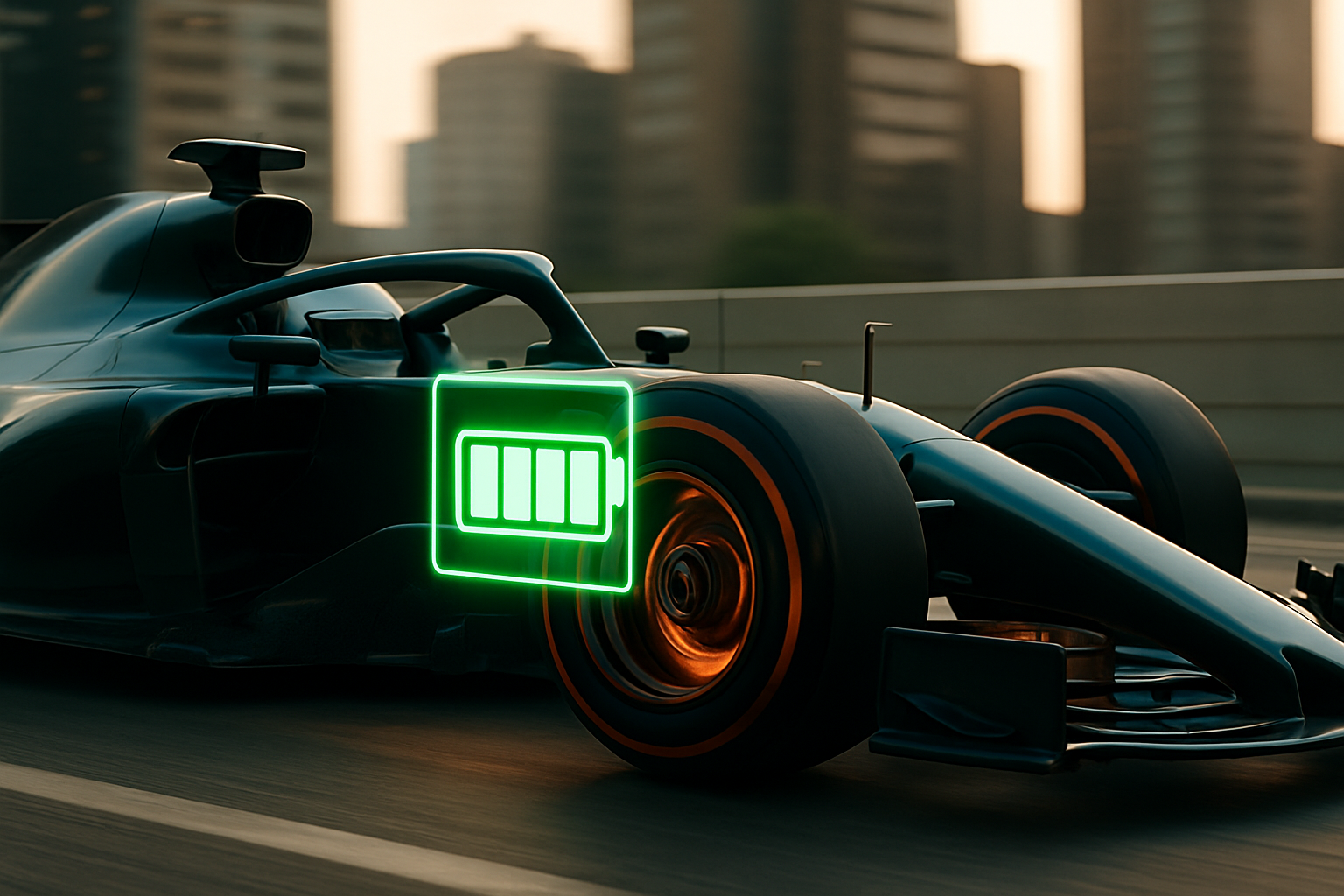Kinetic Energy Recovery Systems: Racing's Hidden Power Source
Imagine a world where every time you tap the brakes, you're not just slowing down, but storing energy for your next acceleration. This isn't science fiction; it's the reality of Kinetic Energy Recovery Systems (KERS). Born on the racetracks of Formula 1, KERS has been revolutionizing motorsports for over a decade. But what exactly is this technology, and how does it work? More importantly, could it be the key to unlocking a new era of efficiency in everyday vehicles?

But KERS isn’t just for the elite world of motorsports. Automotive engineers have been exploring ways to adapt this technology for everyday vehicles. The potential benefits are substantial: improved fuel efficiency, reduced emissions, and enhanced performance. As we push towards a more sustainable future, KERS could play a crucial role in bridging the gap between high-performance and eco-friendly driving.
The Science Behind the System
At its core, KERS is about energy conversion and storage. When a vehicle brakes, it converts kinetic energy into heat through friction. KERS intercepts this process, capturing a portion of that energy before it’s lost as heat. There are several methods for storing this recaptured energy:
-
Flywheel systems: A spinning flywheel stores energy mechanically.
-
Electric systems: Energy is stored in batteries or supercapacitors.
-
Hydraulic systems: Pressurized fluid stores the energy.
Each system has its advantages and challenges. Flywheel systems are lightweight and efficient but can be complex to integrate. Electric systems are versatile but add weight due to batteries. Hydraulic systems are powerful but less energy-dense than their counterparts.
Overcoming Implementation Challenges
While KERS shows great promise, its widespread adoption faces several hurdles. Cost is a significant factor, as the systems can be expensive to produce and integrate into existing vehicle designs. There’s also the challenge of weight; adding KERS components can offset some of the efficiency gains if not carefully balanced.
Reliability and durability are other concerns, especially for road cars that need to perform consistently over hundreds of thousands of miles. Engineers are working to address these issues, developing more robust and cost-effective KERS solutions that can withstand the rigors of daily driving.
The Future of KERS in Consumer Vehicles
As technology advances, we’re seeing KERS-like systems making their way into production vehicles. Many hybrid cars already use a form of regenerative braking, which is essentially a simplified version of KERS. However, the full potential of KERS in consumer vehicles is yet to be realized.
Imagine a future where your car’s braking energy powers your air conditioning or charges your mobile devices. Or consider the possibilities for performance vehicles, where KERS could provide instant torque for thrilling acceleration without compromising fuel efficiency.
Beyond Cars: KERS in Public Transportation
The applications of KERS extend beyond personal vehicles. Public transportation, particularly buses and trains, could benefit significantly from this technology. In stop-and-go urban environments, vehicles equipped with KERS could recover a substantial amount of energy typically lost in frequent braking.
Some cities are already experimenting with KERS-equipped buses. Initial results show promising improvements in fuel efficiency and reduced emissions. As urban areas worldwide grapple with air quality issues and the need for sustainable transport, KERS could be a key part of the solution.
Integration with Smart City Infrastructure
Looking further into the future, we can envision KERS technology integrated with smart city infrastructure. Imagine a network of vehicles all equipped with KERS, working in harmony with traffic management systems to optimize energy use across an entire urban area. Traffic lights could communicate with approaching vehicles, allowing them to time their energy recovery and deployment for maximum efficiency.
This level of integration could lead to significant reductions in overall energy consumption and emissions in urban areas. It’s a vision of a future where our vehicles don’t just transport us but actively contribute to a more sustainable and efficient urban ecosystem.
The Role of KERS in Motorsports Evolution
Returning to where it all began, KERS continues to play a crucial role in the evolution of motorsports. As racing series like Formula 1 push towards more sustainable practices, KERS and its descendants are at the forefront of this change. The technology not only enhances performance but also aligns with the growing emphasis on efficiency and environmental responsibility in racing.
The lessons learned on the racetrack continue to inform developments in road car technology. This symbiotic relationship between motorsports and consumer vehicles, with KERS as a central player, is driving innovation in both sectors.
Conclusion: KERS as a Catalyst for Automotive Innovation
Kinetic Energy Recovery Systems represent more than just a technological advancement; they embody a shift in how we think about energy use in vehicles. By capturing and repurposing energy that would otherwise be wasted, KERS opens up new possibilities for efficiency and performance.
As we look to the future of automotive technology, KERS stands out as a versatile and promising solution. Its potential to improve efficiency, enhance performance, and reduce environmental impact makes it a technology worth watching. From the high-octane world of Formula 1 to the bustling streets of our cities, KERS is set to play an increasingly important role in shaping the future of transportation.
The journey of KERS from a racing innovation to a potential game-changer in consumer vehicles illustrates the power of motorsports as a testbed for automotive technology. As we continue to push the boundaries of what’s possible in vehicle engineering, technologies like KERS will be at the forefront, driving us towards a more efficient and sustainable automotive future.





